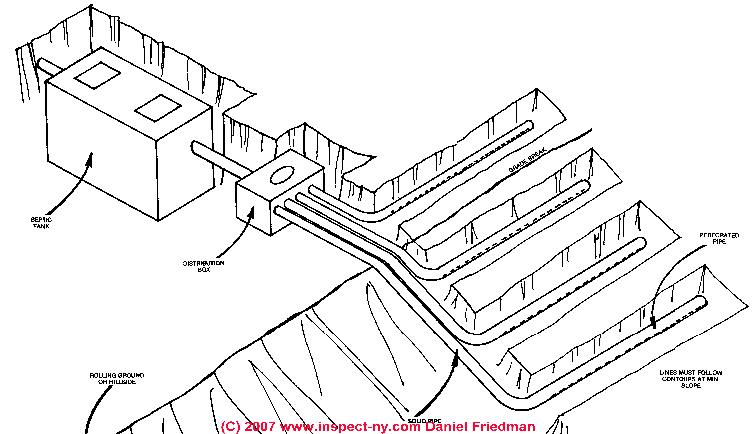
This is where waste material is broken down by bacterial action. To accomplish this a system consists of the following elements: (1) A sewer line, which connects the home's plumbing to the septic tank (2) A septic tank, which allows for the settling of solids and provides the initial treatment of the sewage. The purpose of a home's subsurface sewage disposal system (septic system) is to dispose of the waste water generated by the occupants in such a manner that the soils on the property can disperse it without causing an adverse effect on groundwater and in turn on public health and the environment. In order to help buyers obtain information which address these concerns, we have put together this Fact Sheet to guide them in making informed decisions regarding the potential problems and costs associated with a property's septic system.
For projects with an increase in flow that requires the existing drainfield to be expanded greater than 10%.What a Purchaser Should Know Before Buying A Home Served by a Septic Systemįrequently prospective buyers of a single family home have many questions regarding the septic system serving the dwelling: What does the existing septic system consist of? Is it working properly? How long will it last? If it fails, how much will a replacement system cost?. A new septic permit will only be issued that meets all current standards. The site/existing system will be evaluated to assure current standards are being met. The fifth septic permit renewal will require a new application to be submitted with the renewal fee. 1 year renewal (extends permit for an additional year from original issuance date). (Must apply for renewal prior to expiration date) No partial refund is made if fieldwork is done but a permit cannot be approved. Septic permits are valid one (1) year from date of issuance. Permit applications are valid for 1 year. Permits to construct a septic system are not granted until all such issues are addressed and / or submitted in writing as part of the plot plan / permit application and found to be consistent with current regulations. Permit approval depends on the following: the predicted maximum daily sewage flow house size and location well / spring location surface water locations depth to groundwater on limiting layers changes to native soil (road cuts, grading, benching) distance to neighboring structures (wells, buildings, drainfields) proposed land use soil type other issues of concern. 
Sizing of the drainfield and septic tank is determined.A review of soil types is made at proposed location for actual septic system.A permit is required for new systems or new location of a system.





 0 kommentar(er)
0 kommentar(er)
